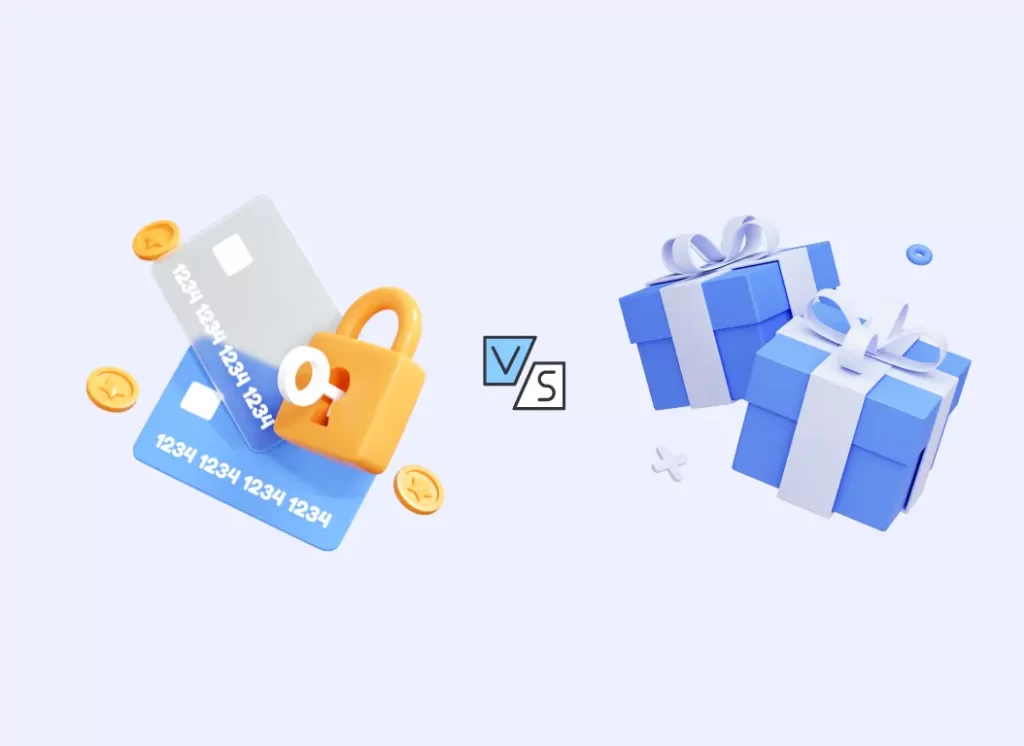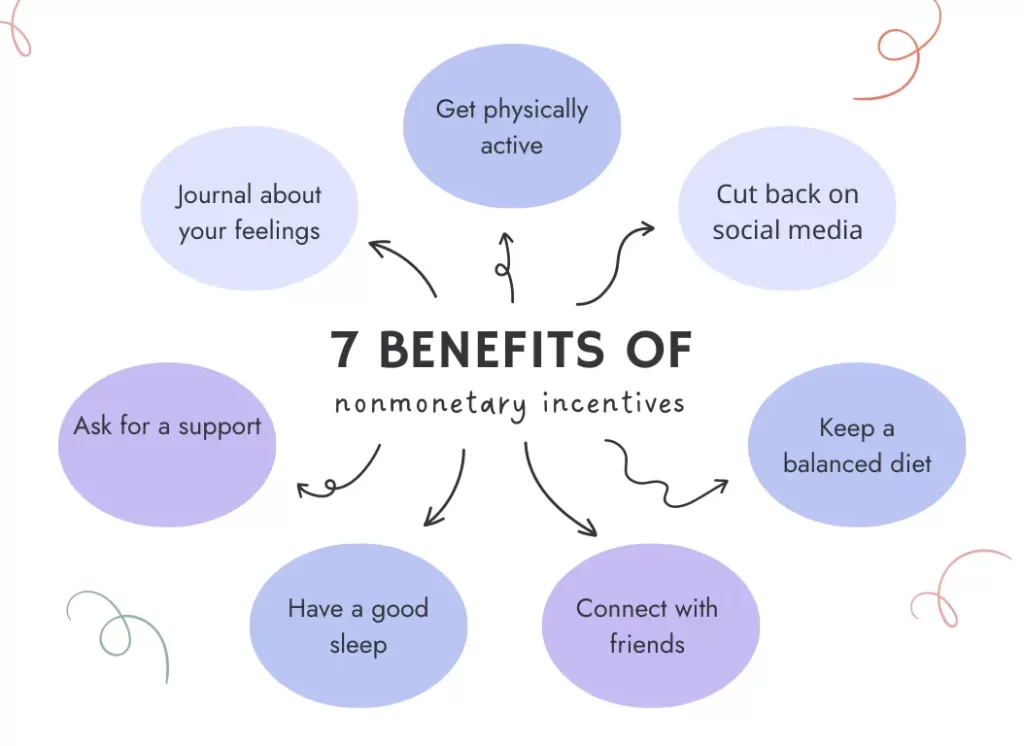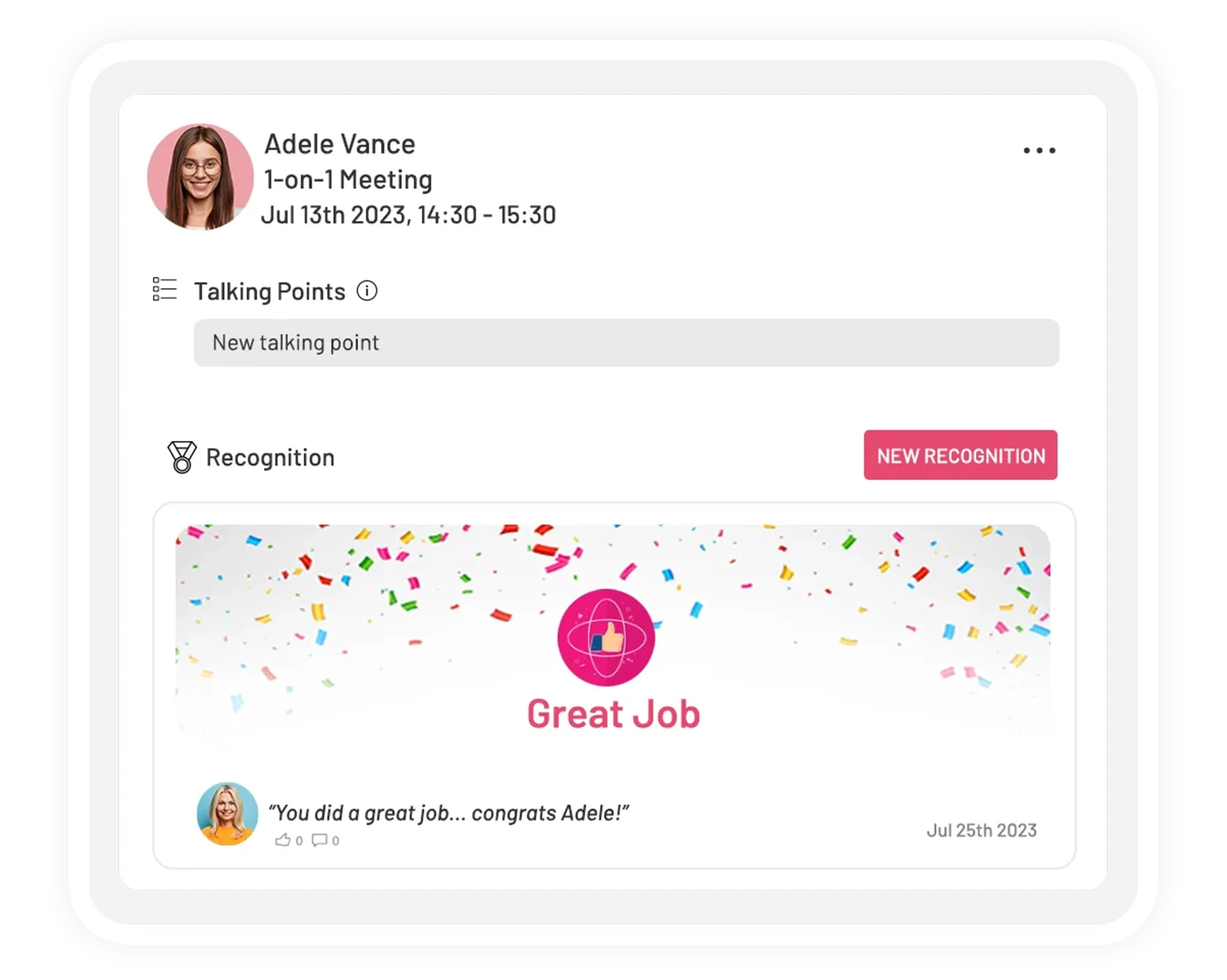The current landscape of our business world requires organizations and their leaders to realize that the key to employee satisfaction and productivity is not simply the traditional salary and bonuses. While they are still just as important undoubtedly, they’re also just the bare minimum.
So, the employers with the right senses on this turn to other ways of motivating and engaging their workforce. This is where nonmonetary incentives come into play. They are a powerful tool for organizations to use in order to boost morale, enhance employee satisfaction, and create a culture of positive and supportive workplace.
Let’s explore what kind of benefits nonmonetary incentives can provide, how they perform in comparison to monetary incentives and what these rewards and recognitions can help support your organization’s road to success.
Table of Contents
What are non-monetary incentives?
Self explanatorily, non monetary incentives are the type of rewards or perks that employees receive that are not directly related to financial compensation.
These rewards focus on a more sentimental aspect of things if you will, things that will enhance your work experience and possibly motivate you in a different way than monetary rewards.
While of course, we recognize that monetary rewards are pretty nice to receive, what non monetary incentives try to achieve is to contribute to an employee’s productivity at a level where they feel valued in their environment and are more inclined to put out quality work.
These nonmonetary incentives are therefore designed to recognize and reward the workforce for their efforts and play an integral role in fostering a positive workspace, promoting high employee engagement and loyalty.
Monetary vs Non-monetary incentives
To have a better understanding of how monetary incentives and nonmonetary incentives differ from one another, let’s take a closer look at each of them.

Monetary Incentives:
- By nature, monetary incentives provide a direct and tangible reward as it is in the form of money
- As with many things in our modern world, and rightly so in many cases, money is a great motivator. These incentives are practiced exactly because of that.
- Monetary incentives are also utilized in order to reduce retention rates and attract top talent to an organization’s workforce.
- They are relatively easy to measure when you’re giving out a reward in the shape of monetary incentives and likely easier to correlate as to literally how much you wish to reward your employee.
Nonmonetary incentives:
- Typically, nonmonetary incentives show recognition and appreciation in a more emotionally and psychologically fulfilling way for the employees.
- They provide a range of ways you can motivate your team as there is more room for imagination in these incentives as they are easily customizable from one employee to another.
- This customizability and ability to tailor according to the achievements and characters of your employees also make non-monetary incentives a good approach to implement to have greater job satisfaction and significantly decrease employee disengagement rates.
- Since non monetary incentives touch upon more psychological fulfillment in employees, when executed correctly they can actually create a longer-term motivation and be more sustainable.
Benefits of Nonmonetary Rewards
Nonmonetary rewards offer a range of benefits to organizations in various ways. To list some;

- Job Satisfaction: Nonmonetary rewards make employees feel valued and appreciated. This is a key part of keeping your people happy and loyal to your organization which makes nonmonetary incentives an amazing tool.
- Improved Morale: In relation to job satisfaction, making your employees feel cared-for, for boosts morale in your employees automatically. Satisfaction surveys are a good tool to keep track of your progression in this regard.
- Increased Motivation and Engagement: Nonmonetary incentives tap into a deeper connection between the organization and the employees since they are a more personal approach. If employees feel recognized and supported this way, they are that much more likely to be more engaged and motivated to keep being engaged.
- Attraction & Retention of Talent: An organization is much more likely to attract and keep people in their landscape if they offer nonmonetary rewards because they help create a positive work experience. These incentives can be a bigger part of the decision-making behind choosing and staying within a company more than you think.
- Work-Life Balance: Non monetary rewards can come in different forms for example flexible work arrangements or generous leave policies that encourage employees to tend to their personal lives as much as their professional lives. This helps employees feel valued beyond simply their financial gains from their jobs.
- Strengthen Team Dynamics: Nonmonetary incentives can also help aid the creation of a stronger team that has better bonds. This positive contribution is inevitably going to affect your overall workplace positivity.
- Adaptability: One of the biggest benefits of non monetary rewards is that they can be tailor-made for different employees. You can customize these incentives according to your employees’ needs and preferences. By offering a variety of rewards other than a financial one, organizations allow space for catering to different motivators in their workforce.
- Professional Development Opportunities: Provide your employees with opportunities for skill development, training programs, workshops, and career advancements. This can be a very valuable nonmonetary incentive simply because not only enhances their skills but also shows a commitment to their long-term professional growth.
- Wellness Programs: Implementing wellness initiatives, such as fitness classes, mental health resources, or wellness challenges, contributes to a healthier and happier workforce. Nonmonetary rewards that focus on employee well-being are likely to lead to increased job satisfaction and improved overall health.
- Recognition Programs: Establish a formal recognition program where employees are acknowledged for their achievements and milestones. This could include employee of the month awards, shout-outs in meetings, or other forms of recognition wall in the office.
- Flexible Work Hours or Remote Work Options: Offering flexibility in work hours or the option to work remotely can greatly contribute to work-life balance. Employees appreciate the ability to manage their schedules according to their personal needs, fostering a positive and accommodating work environment.
- Team-building Events and Retreats: Nonmonetary incentives can also include various team-building activities, offsite retreats, or social events. These experiences help strengthen team bonds, improve communication, and create a positive and collaborative work culture.
- Employee Empowerment and Involvement: Empower your workforce by involving them in decision-making processes, seeking their input on projects as a form of non monetary incentive. This fosters a sense of ownership, belonging, and value within the organization.
Nonmonetary Incentive Examples
Take a look at some of these nonmonetary incentive examples we’ve compiled for you so you can gather a better idea what non monetary rewards can look like in your organization.
1. Flexible Work Arrangements
Creating remote work options and allowing your workforce to utilize different locations or alternatively having flexible hours set in place to provide more room for your employees’ individualities is a great way to provide a nonmonetary incentive.
2. Professional Development Opportunities
Providing workshops, seminars, or courses to enhance skills. In addition, providing mentorship programs is a good way to connect and provide support to your employees. This can also be an incentive in the form of career development plans.
3. Employee Wellness Programs
Introduce health initiatives to your workspace to promote physical and mental health through fitness challenges or wellness campaigns. Offer counseling services, stress management workshops, or mindfulness programs.
4. Recognition and Appreciation
Acknowledging and showing appreciation for performance on a monthly basis by implementing employee of the month awards is a great way to help create a supportive space. Praising employees in team meetings or company-wide communications is also a good way to show appreciation and express gratitude.
Teamflect
Teamflect is an all-in-one performance management solution inside Microsoft Teams, that has a great recognition module so you can motivate, encourage, and appreciate your team!
Use Teamflect’s intuitive recognition tool to create a culture of appreciation that reflects your company’s values and increases engagement!
- Customizable recognition badges
- Assign points to each recognition
- Create live recognition feeds and dynamic leaderboards
- Cash your recognition points out for rewards.



